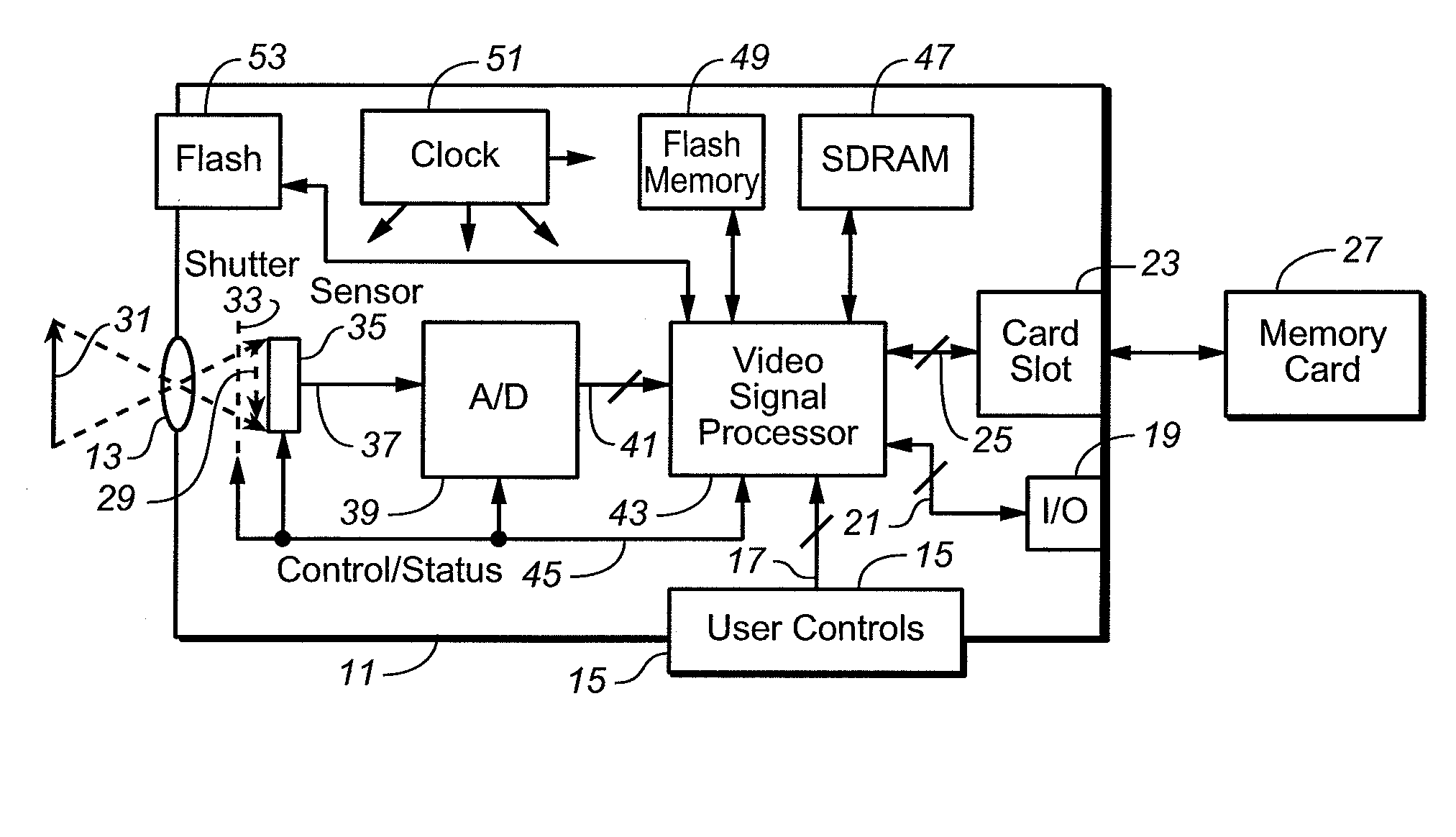Techniques for Modifying Image Field Data Obtained Using Illumination Sources
a technology of image field data and illumination source, which is applied in the field of processing captured digital imaging data, can solve the problems of non-uniform illumination, non-uniform illumination, and non-uniform illumination compensation techniques of illumination sources, and achieves the effects of lower intensity, higher intensity, and lower resolution
- Summary
- Abstract
- Description
- Claims
- Application Information
AI Technical Summary
Benefits of technology
Problems solved by technology
Method used
Image
Examples
specific embodiments
[0036] Non-uniform illumination correction factors are derived using data from at least two images that have been captured using different illumination levels. The technique is preferably carried out by use of any two of the following: (1) an image illuminated by natural lighting, captured with no flash, (2) an image captured with a flash of reduced intensity (“semi-flash”), and (3) an image captured with full intensity flash illumination. Semi-flash or no-flash images may be preview images. Preview images are commonly captured by a camera or other imaging device at lower resolution than the final image and displayed to a user on a small display screen built into the camera as an indication of what the final image will look like.
[0037] Correction factors are derived that are applicable to the image of interest being captured, which is either one of the at least two images from which the correction factors are derived, or is captured close in time to when the at least two images are...
PUM
 Login to View More
Login to View More Abstract
Description
Claims
Application Information
 Login to View More
Login to View More - R&D
- Intellectual Property
- Life Sciences
- Materials
- Tech Scout
- Unparalleled Data Quality
- Higher Quality Content
- 60% Fewer Hallucinations
Browse by: Latest US Patents, China's latest patents, Technical Efficacy Thesaurus, Application Domain, Technology Topic, Popular Technical Reports.
© 2025 PatSnap. All rights reserved.Legal|Privacy policy|Modern Slavery Act Transparency Statement|Sitemap|About US| Contact US: help@patsnap.com



